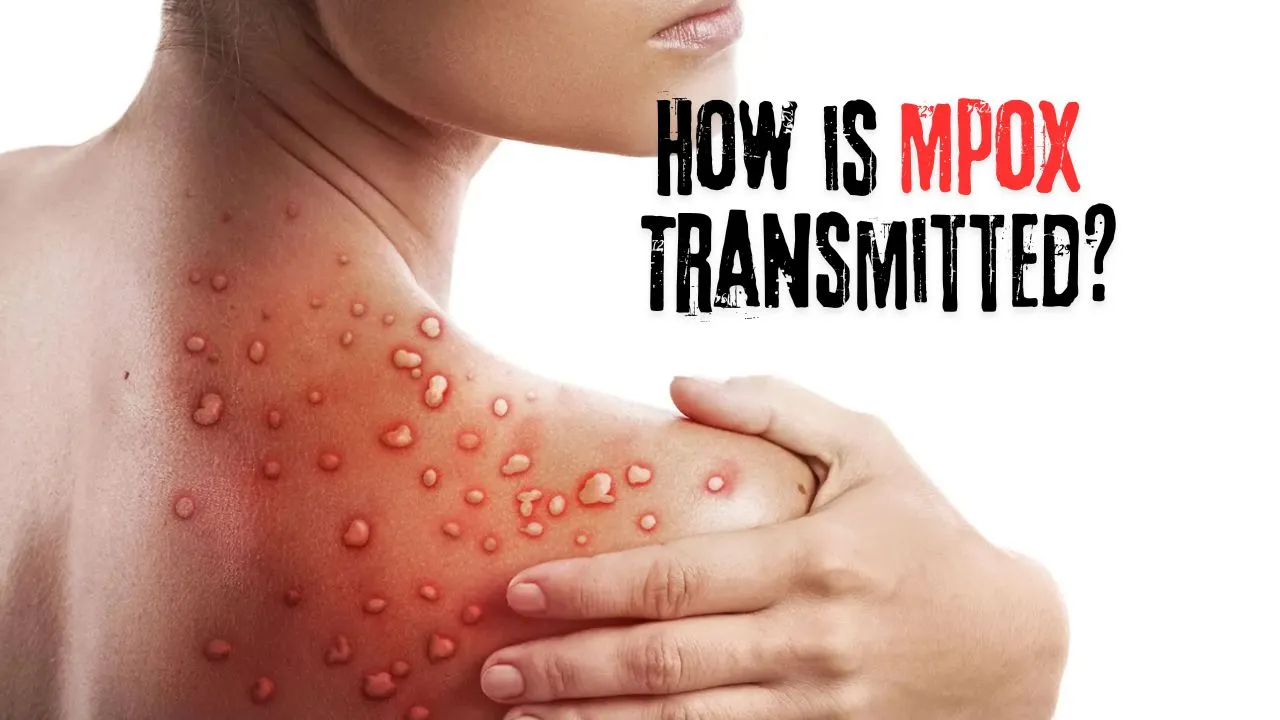Learn how Mpox (monkeypox) is transmitted, how to prevent it, who is most at risk, and the early signs of infection. Stay informed with this comprehensive guide.
Table of Contents
How is Mpox Transmitted?
Mpox is primarily transmitted through close contact with an infected person, animal, or contaminated materials. The virus can spread through several routes:
| Transmission Route | Details |
|---|---|
| Animal-to-Human | Contact with the blood, bodily fluids, or skin lesions of infected animals (e.g., rodents, primates). |
| Human-to-Human | Direct contact with infectious lesions, scabs, or bodily fluids. Prolonged face-to-face contact can also lead to transmission through respiratory droplets. |
| Contaminated Objects | Handling items like bedding, clothing, or towels that have been used by an infected person. |
| Respiratory Droplets | Transmission via large respiratory droplets during prolonged close contact. This is less common but can occur, especially in enclosed spaces. |
| Vertical Transmission | From mother to fetus via the placenta or during childbirth. |
How Can You Prevent Mpox?
Preventing Mpox requires a combination of individual precautions and public health measures. Here are some key strategies:
1. Vaccination
- Smallpox Vaccine: Vaccines like JYNNEOS and ACAM2000, initially developed for smallpox, can provide protection against Mpox. Vaccination is particularly recommended for those at high risk, such as healthcare workers.
2. Hygiene Practices
- Hand Hygiene: Regularly wash hands with soap and water or use an alcohol-based hand sanitizer, especially after contact with potentially contaminated surfaces or individuals.
- Disinfection: Clean and disinfect surfaces and objects that may be contaminated with the virus.
3. Avoiding Contact
- Isolation: Infected individuals should isolate themselves to prevent spreading the virus to others.
- Avoiding Animal Contact: Refrain from handling animals that may be carriers of the virus, especially in regions where Mpox is endemic.
4. Personal Protective Equipment (PPE)
- Masks and Gloves: Use masks and gloves when caring for someone who is infected or when handling potentially contaminated materials.
5. Public Health Measures
- Quarantine and Monitoring: Quarantine measures for those exposed to the virus and monitoring for symptoms can help control the spread.
Will Mpox Spread?
Mpox has the potential to spread, especially in areas with poor healthcare infrastructure or where people are in close contact with infected individuals or animals. The spread can be contained with timely public health interventions, but the risk increases in crowded settings or places with limited access to healthcare.
| Factor | Impact on Spread |
|---|---|
| Close Contact | High risk in settings with close human-to-human interaction (e.g., households, healthcare facilities). |
| Travel | International travel can facilitate the spread to non-endemic areas. |
| Healthcare Access | Limited access to healthcare can delay diagnosis and treatment, increasing the spread. |
| Public Health Response | Effective surveillance, quarantine, and vaccination efforts can significantly reduce the spread. |
Who is Most at Risk from Mpox?
Certain groups are more susceptible to severe illness from Mpox:
1. Individuals with Weakened Immune Systems
- People with HIV, cancer, or those undergoing immunosuppressive treatments are at higher risk for severe Mpox infection.
2. Pregnant Women
- Vertical transmission from mother to fetus is possible, and pregnant women are at risk of severe outcomes.
3. Children
- Young children, especially those under 8 years old, are more likely to experience severe symptoms and complications.
4. Healthcare Workers
- Due to their exposure to infected patients, healthcare workers are at increased risk, particularly if proper protective measures are not followed.
5. Individuals in Endemic Regions
- People living in or traveling to areas where Mpox is endemic (Central and West Africa) are at higher risk of exposure.
What Are the First Signs of Mpox?
Recognizing the early signs of Mpox is crucial for prompt diagnosis and treatment. The disease typically progresses through distinct stages:
| Stage | Symptoms | Timing |
|---|---|---|
| Incubation Period | No symptoms | 5 to 21 days post-exposure |
| Prodrome (Early Stage) | Fever, headache, muscle aches, back pain, swollen lymph nodes, chills, fatigue | 1 to 3 days before rash onset |
| Rash Development | Begins as flat red spots, progresses to raised bumps, fluid-filled blisters, pustules, and eventually scabs | 3 days after fever onset |
The rash often starts on the face and then spreads to other parts of the body, including the hands, feet, and genitals. The rash is a hallmark of Mpox and one of the key symptoms used for diagnosis.
Conclusion
Mpox is a serious viral disease with the potential for significant health impacts, particularly for vulnerable populations. Understanding how the virus is transmitted, how to prevent it, and recognizing the early signs are crucial steps in managing and reducing the spread of Mpox. While there is no specific cure, early detection and supportive care can help manage symptoms and prevent complications. Public health measures, including vaccination and proper hygiene, remain the best tools for preventing Mpox outbreaks and protecting at-risk groups.
Final Thoughts
Staying informed and vigilant is key to combating Mpox. By following prevention guidelines, recognizing symptoms early, and seeking medical attention when necessary, we can reduce the impact of this disease and protect our communities.

